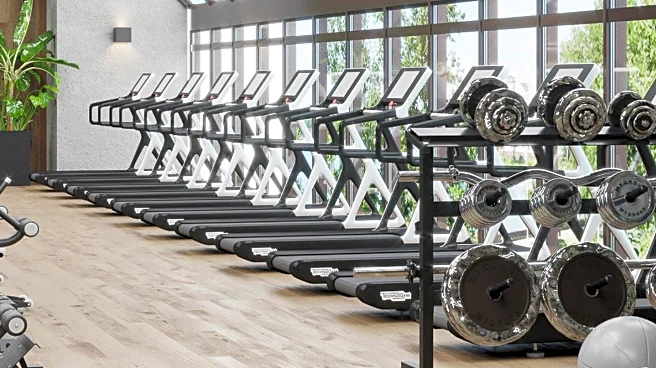What's Happening?
Military.com has published a detailed workout plan designed to help individuals prepare for military fitness tests. The workout, known as the Max Out PT Pyramid, is a progressive calisthenics and cardio routine that challenges participants to push their limits until they can no longer complete the required repetitions. The workout includes a series of exercises such as pull-ups, push-ups, squats, and dips, combined with running intervals. The goal is to improve muscle stamina and running times, essential components of military fitness tests. The workout is structured as a 'one-way trip' up a half pyramid, where participants increase repetitions with each set until they reach failure in three out of four exercises. This routine serves as both a fitness assessment tool and a training regimen, encouraging individuals to track their progress over time.
Why It's Important?
The significance of this workout plan lies in its potential to enhance the physical readiness of individuals preparing for military service. Physical fitness is a critical component of military training, and the ability to perform well on fitness tests can impact a service member's career progression and operational effectiveness. By providing a structured and challenging workout, Military.com supports individuals in achieving the necessary fitness levels required for military duties. This initiative also highlights the importance of maintaining physical health and endurance, which are vital for the demanding nature of military operations. Additionally, the workout can benefit civilians interested in improving their fitness levels, promoting a culture of health and wellness.
What's Next?
Participants are encouraged to incorporate this workout into their regular fitness routines and assess their progress monthly. As individuals continue to engage with the Max Out PT Pyramid, they may see improvements in their fitness test scores and overall physical capabilities. Military.com may continue to offer additional resources and workout plans to support military personnel and fitness enthusiasts. The broader fitness community might also adopt similar training methods, recognizing the benefits of structured, progressive workouts in achieving fitness goals.











